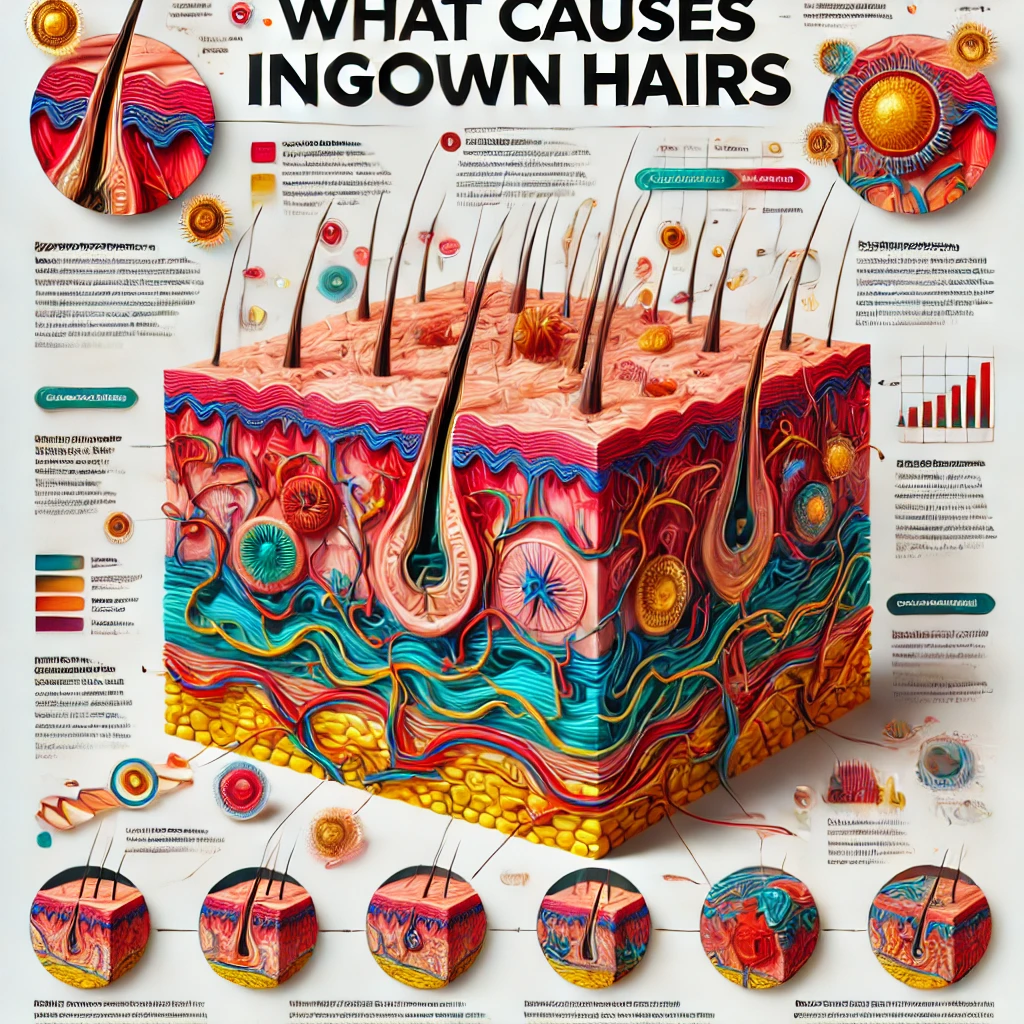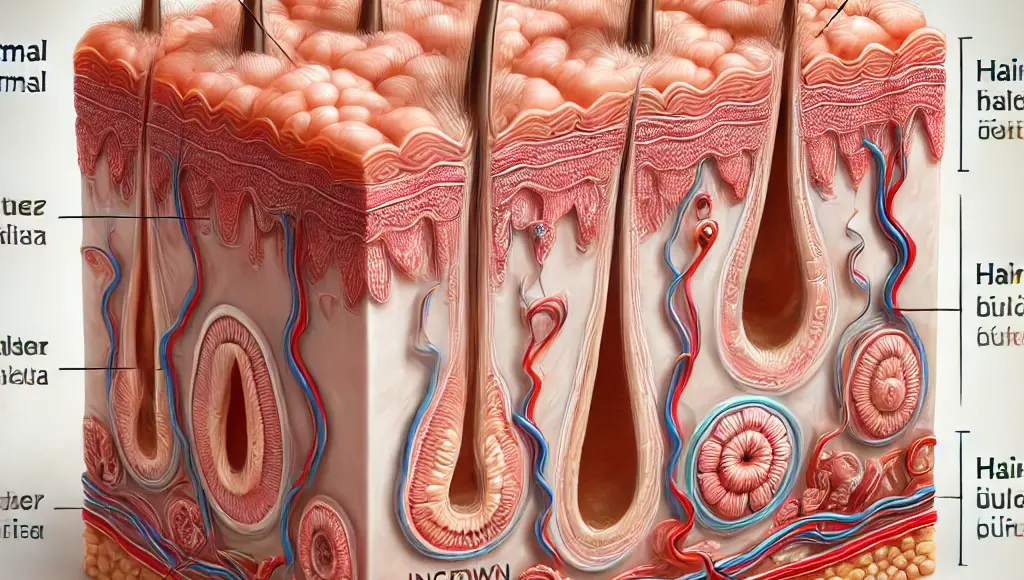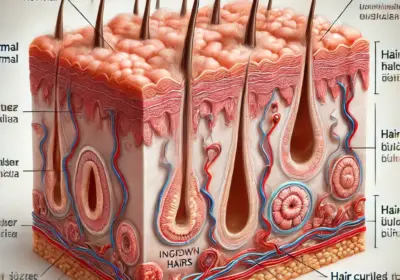Ingrown hairs, also known as pilonidal sinus, can be both a painful and persistent issue. Understanding what causes them and how to prevent them is crucial for maintaining healthy skin. In this article, we will explore the primary causes of ingrown hairs, their symptoms, and the best ways to prevent them.

What Are Ingrown Hairs?
Ingrown hairs occur when hair curls back or grows sideways into the skin instead of rising up from it. This can lead to inflammation, pain, and sometimes infection. While they can occur anywhere on the body, they are most common in areas where hair is frequently removed, such as the face, legs, and bikini line.
Causes of Ingrown Hairs
There are several factors that can contribute to the development of ingrown hairs:
- Hair Removal Techniques:
- Shaving: Shaving cuts hair at a sharp angle, making it easier for the hair to re-enter the skin.
- Waxing and Plucking: These methods remove the hair from the root, but when the hair regrows, it can become trapped under the skin.
- Hair Type:
- People with curly or coarse hair are more prone to ingrown hairs because their hair is more likely to curl back into the skin.
- Clothing:
- Tight clothing can cause friction and pressure on the skin, leading to hairs being pushed back into the skin.
- Improper Exfoliation:
- Dead skin cells can clog hair follicles, forcing the hair to grow sideways under the skin.
Symptoms of Ingrown Hairs
Identifying ingrown hairs is relatively straightforward. Common symptoms include:
- Red Bumps: Small, round bumps that may be filled with pus.
- Pain and Tenderness: The area around the ingrown hair can be painful to touch.
- Itching: Ingrown hairs can cause significant itching.
- Infection: If left untreated, ingrown hairs can become infected, leading to larger, more painful bumps and sometimes abscesses.
Prevention Methods
Preventing ingrown hairs involves a combination of proper hair removal techniques and skin care practices:
- Proper Shaving Techniques:
- Use a sharp, clean razor and shave in the direction of hair growth.
- Avoid shaving too close to the skin.
- Regular Exfoliation:
- Gently exfoliate the skin to remove dead skin cells and help prevent hair follicles from becoming clogged.
- Moisturizing:
- Keep the skin well-moisturized to reduce dryness and irritation.
- Choosing the Right Hair Removal Method:
- Consider alternatives to shaving, such as depilatory creams or laser hair removal, which reduce the likelihood of ingrown hairs.
- Wearing Loose Clothing:
- Opt for loose-fitting clothing to reduce friction and pressure on the skin.
Conclusion
Ingrown hairs can be a nuisance, but with the right knowledge and preventive measures, they can be effectively managed. By understanding the causes and symptoms of ingrown hairs and adopting healthy skin care habits, you can keep your skin smooth and free from irritation.
You can find more articles like this here.










